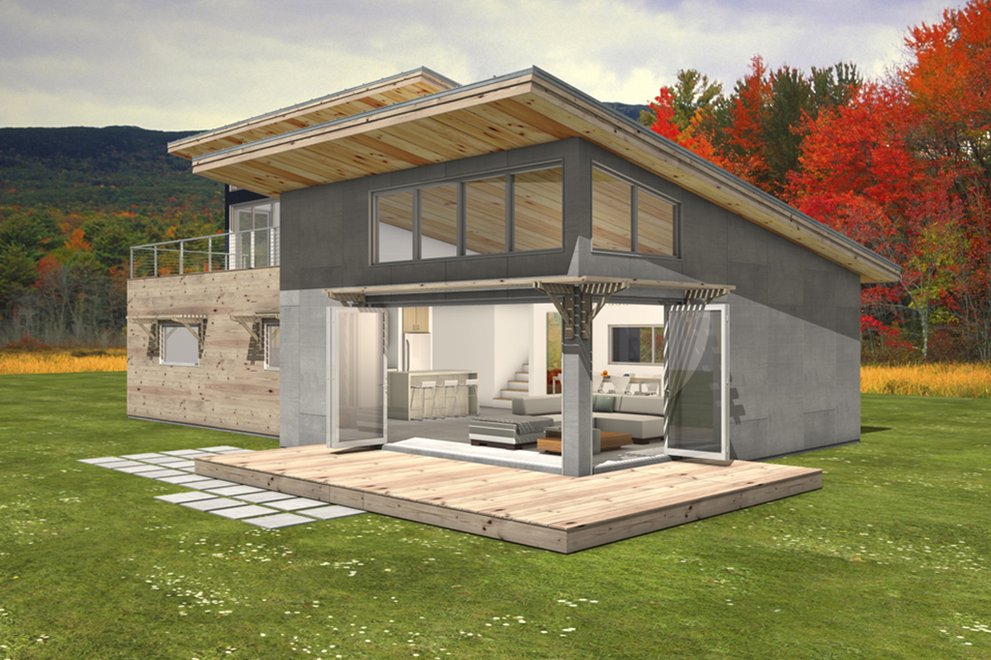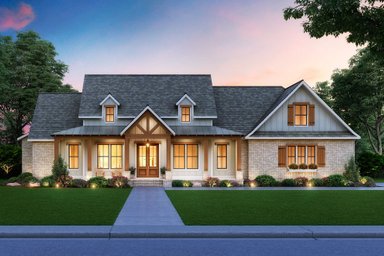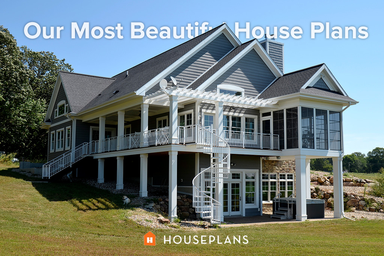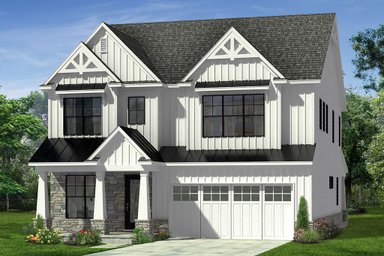Welcome to a modern masterpiece in Los Angeles designed by architect John Lautner, who was a student of Frank Lloyd Wright. The house was built in 1963 for Helen and Paul Sheats, then purchased by James Goldstein in 1972, who has owned it ever since, refined and rebuilt it with Lautner himself, and has now promised it and the adjacent landscape and art space to the Los Angeles County Museum of Art upon his death. The house is not open to the public but LACMA plans "to host a few events a year there starting in the fall."
I toured this remarkable residence some years ago and it took my breath away. Though it might seem a little extreme to someone who just wants a functional and comfortable place to live, I think it has lessons for anyone thinking of building a new home.
The house rides a steep slope in the Hollywood Hills overlooking LA. The entry is off the driveway along a path made mysterious by lush tropical plantings and geometric concrete platforms that allow you to step across a small pond. The pavers make you concentrate on the journey and where you place your feet -- as you would do in a Japanese Zen garden like Katsura in Kyoto -- at once sweeping you away from the everyday suburban world.
(The James Goldstein House, designed by John Lautner, photo © Tom Ferguson Photography) And then suddenly you are in the living room under a soaring roof of concrete triangles that frame a pool deck and wide-angle view of Los Angeles below. The living room photograph, above, is looking back toward the entry path. You can see the pool at the top of this post. It's two steps below the level of the living room and flush with the lower terrace. When still, the water resembles a sheet of glass -- another blurring of sold and void.
(The James Goldstein House, designed by John Lautner, photo © Tom Ferguson Photography)
Here's a view of the lower, master bedroom level, below the swimming pool, with its prow of diaphanous butted glass reflecting the cityscape. The deck is motorized and slides away to reveal a trapezoidal hot tub beneath it.
Indeed this is a modern magician of a house, where borders between spaces and materials are redefined. And solids and voids seem to change places. There are portholes into the swimming pool from the master bedroom so from the bedroom the pool looks like a giant aquarium and from the pool the bedroom looks like a gigantic watery dollhouse. It's no wonder this theatrical design has had a cinematic life: it was the home of Jackie Treehorn, played by Ben Gazzara, in The Big Lebowski.
So what are the take-aways? The main one is to think about how your house and lot could be extensions of each other. The whole house doesn't need to be glass but there might be a place for a folding or sliding
window wall that could allow a great room to expand into a terrace or patio in good weather, as above in Plan 497-31 by FreeGreen, or below in Plan 544-1, inspired by the modern ranch houses of Cliff May,
who incidentally, was a good friend of John Lautner. In the living room photo of the Goldstein house notice that Lautner also blurs the distinction between architecture and furniture, since the couch and long bench are built-in, which makes the room feel
more spacious. A similar idea is visible in Plan 888-3 by architect Nicholas Lee, where the hearth becomes a cantilevered bench running the length of the room.
Of course very few people can inhabit a such a work of art, but anyone can be inspired by it -- especially now that that this house is becoming an object in a museum collection. And why not borrow and adapt an idea or two!
I toured this remarkable residence some years ago and it took my breath away. Though it might seem a little extreme to someone who just wants a functional and comfortable place to live, I think it has lessons for anyone thinking of building a new home.
The house rides a steep slope in the Hollywood Hills overlooking LA. The entry is off the driveway along a path made mysterious by lush tropical plantings and geometric concrete platforms that allow you to step across a small pond. The pavers make you concentrate on the journey and where you place your feet -- as you would do in a Japanese Zen garden like Katsura in Kyoto -- at once sweeping you away from the everyday suburban world.
(The James Goldstein House, designed by John Lautner, photo © Tom Ferguson Photography) And then suddenly you are in the living room under a soaring roof of concrete triangles that frame a pool deck and wide-angle view of Los Angeles below. The living room photograph, above, is looking back toward the entry path. You can see the pool at the top of this post. It's two steps below the level of the living room and flush with the lower terrace. When still, the water resembles a sheet of glass -- another blurring of sold and void.
(The James Goldstein House, designed by John Lautner, photo © Tom Ferguson Photography)
Here's a view of the lower, master bedroom level, below the swimming pool, with its prow of diaphanous butted glass reflecting the cityscape. The deck is motorized and slides away to reveal a trapezoidal hot tub beneath it.
Indeed this is a modern magician of a house, where borders between spaces and materials are redefined. And solids and voids seem to change places. There are portholes into the swimming pool from the master bedroom so from the bedroom the pool looks like a giant aquarium and from the pool the bedroom looks like a gigantic watery dollhouse. It's no wonder this theatrical design has had a cinematic life: it was the home of Jackie Treehorn, played by Ben Gazzara, in The Big Lebowski.
So what are the take-aways? The main one is to think about how your house and lot could be extensions of each other. The whole house doesn't need to be glass but there might be a place for a folding or sliding
window wall that could allow a great room to expand into a terrace or patio in good weather, as above in Plan 497-31 by FreeGreen, or below in Plan 544-1, inspired by the modern ranch houses of Cliff May,
who incidentally, was a good friend of John Lautner. In the living room photo of the Goldstein house notice that Lautner also blurs the distinction between architecture and furniture, since the couch and long bench are built-in, which makes the room feel
more spacious. A similar idea is visible in Plan 888-3 by architect Nicholas Lee, where the hearth becomes a cantilevered bench running the length of the room.
Of course very few people can inhabit a such a work of art, but anyone can be inspired by it -- especially now that that this house is becoming an object in a museum collection. And why not borrow and adapt an idea or two!






